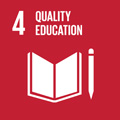- Docente: Donatella Biagi
- Credits: 6
- SSD: L-ART/04
- Language: Italian
- Teaching Mode: Traditional lectures
- Campus: Ravenna
- Corso: Second cycle degree programme (LM) in History, preservation and enhancement of artistic and archaeological heritage and landscape (cod. 9218)
Learning outcomes
The course deals with the history of art histories, namely it allows the student to deepen the knowledge of what is discussed and diffused through the written form in the cultural and social environment of the artist, at different times, taking into account that every example of artistic literature is the result of a complex process of thought and is filtered by the dominant schools of thought. At the end of the course, the student achieves a good level of knowledge of the fundamental texts produced by artists, scholars and philosophers and acquires the indispensable tools for framing artistic production over time and in different places.
Course contents
The course will focus on the critical fortune of Raphael. The moments of his intellectual growth and his commitment as "inspector" for the historical city of Rome, with particular reference to the famous letter to pope Leo X, will be traced through the analysis of the contemporary sources. The reading of his work will be analyzed and critically discussed referring to the prose of Vasari, Bellori and Lanzi; to the nineteenth-century approach in the pages of Passavant, Cavalcaselle and Crowe up to the contemporary literature.
Selected pages of these texts will be read and commented in class.
The aim of this course is also the preparation for the exhibitions that in 2020, the year of the fifth centenary of the artist's death, will be set up in Italy and abroad.
By this way, the students will be induced to critically reflect on the importance and use of ancient and modern art literature.
Readings/Bibliography
- O. ROSSI PINELLI, ed., La storia delle storie dell'arte, Piccola Biblioteca Einaudi, Torino 2014, pp. 28 - 179, 398 - 490
- .J. POPE-HENNESSY, Raffaello (Phaidon 1970), ed. it. Torino, Allemandi 1983
- C. BRANDI, Raffaello, pp. 5-11; E. GARIN, Raffaello e i filosofi antichi, pp. 15-25; S. RAY, Raffaello architetto. La costruzione dello spazio, pp. 133-153; M. MENA MARQUES, Carlo Maratti e Raffaello, pp. 543-559; G. ARBORE POPESCU; Raffaello e la teoria artistica del Settecento, pp. 589-601; G. A. HIRSCHAUER, La fortuna di Raffaello in America nel XVIII e XIX secolo, pp. 801-826, in Raffaello e l'Europa, Istituto Poligrafico e Zecca dello Stato, Libreria dello Stato, Roma 1990
Teaching methods
The lectures will be accompanied by visits to churches and museums that hold works that were the object of the observations of the intellectuals whose thought will be retraced.
An educational travel is planned to complement the course.
Assessment methods
Learning will be verified through an oral interview aimed at recognizing the actual preparation of the student on the topics discussed in the lessons, the texts in the program, the critical skills acquired during the course of study and the methodology learned from the investigation of the ancient sources.
The interview will focus on what was discussed in class and what has been learned by the student with the independent study of the texts in the program.
Teaching tools
PC, video projector, slide projector.
Office hours
See the website of Donatella Biagi
SDGs

This teaching activity contributes to the achievement of the Sustainable Development Goals of the UN 2030 Agenda.
